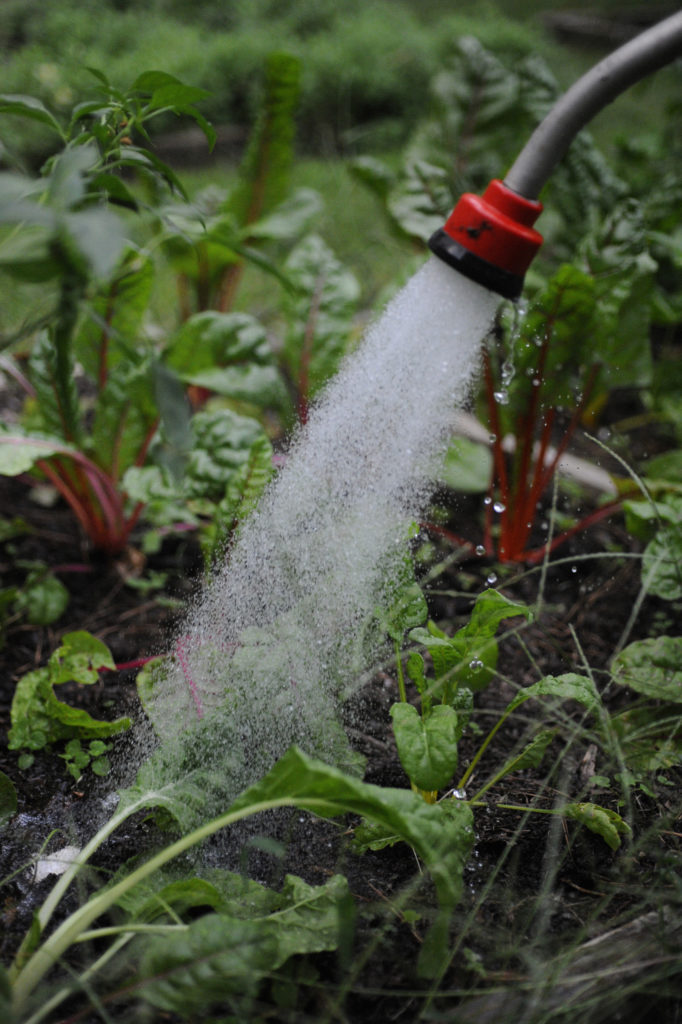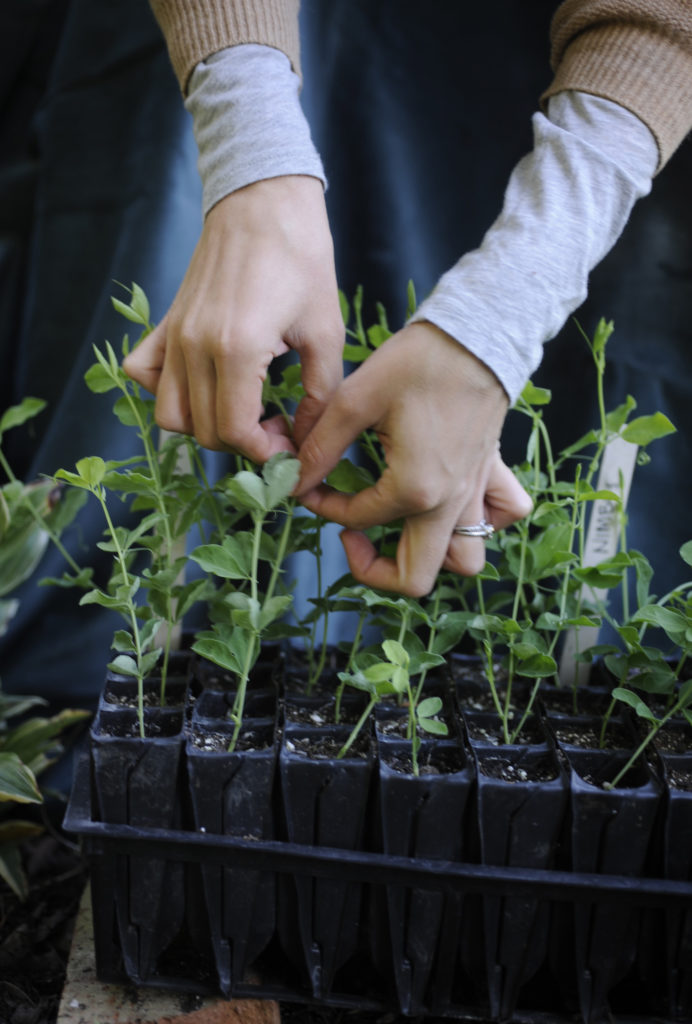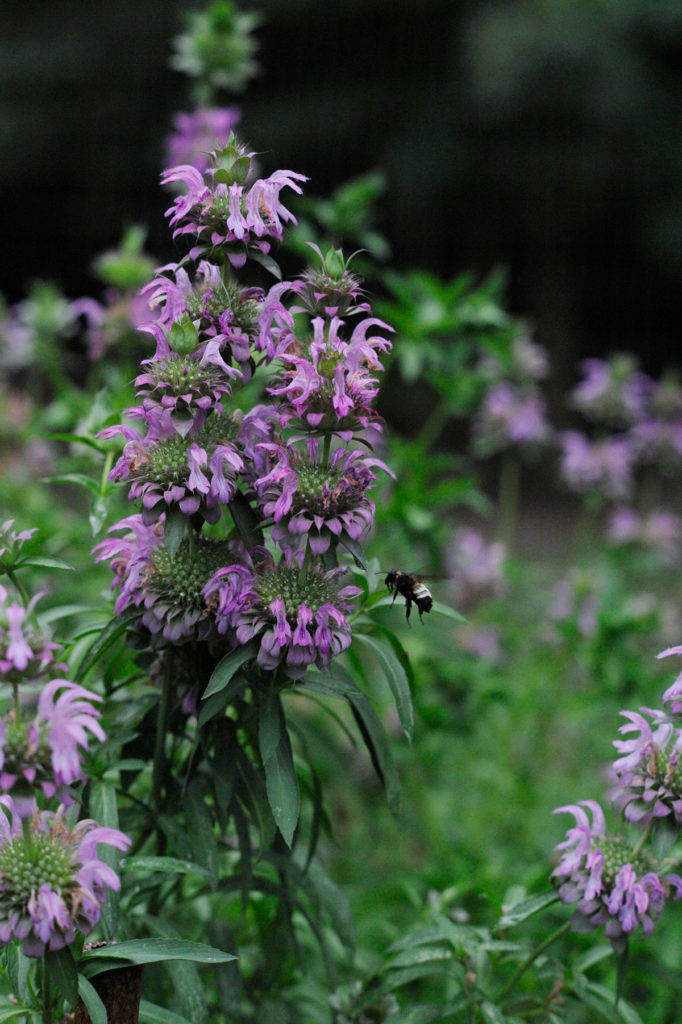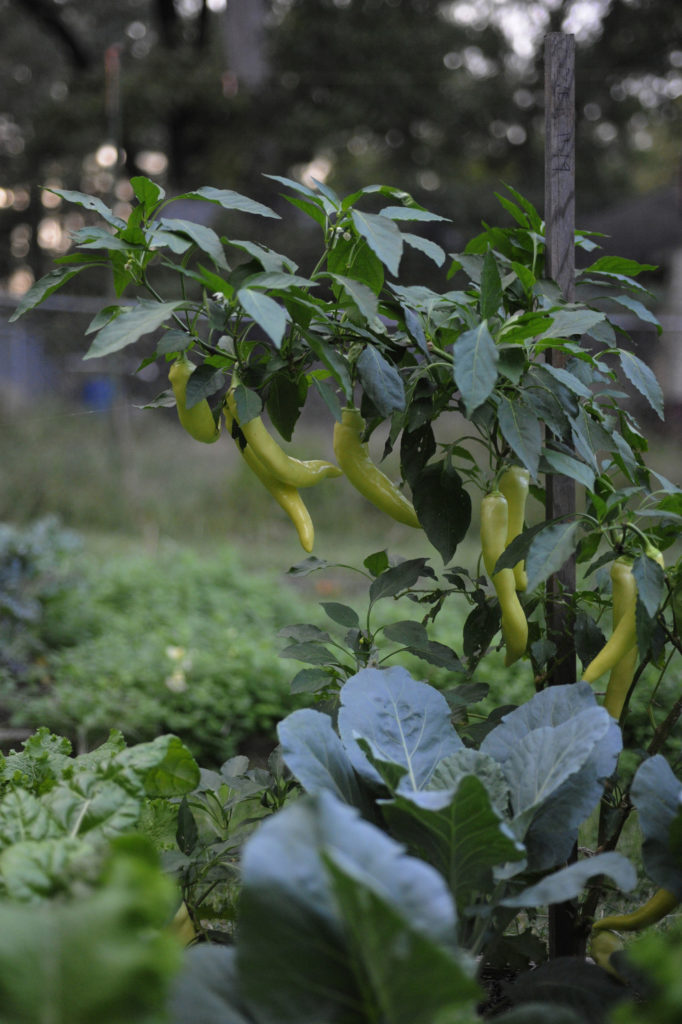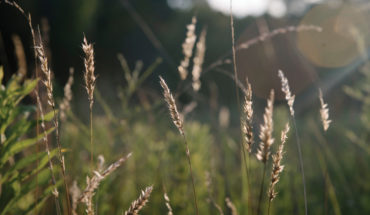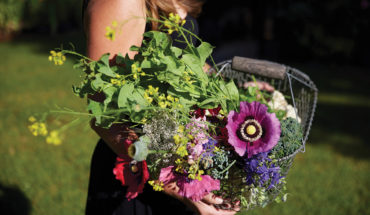This month, prep for colorful spring bulbs, cool season edibles, re-nourish your soil, and give growing garlic a try. Happy fall!
by Hannah Ross | photography by Ali Donnelly
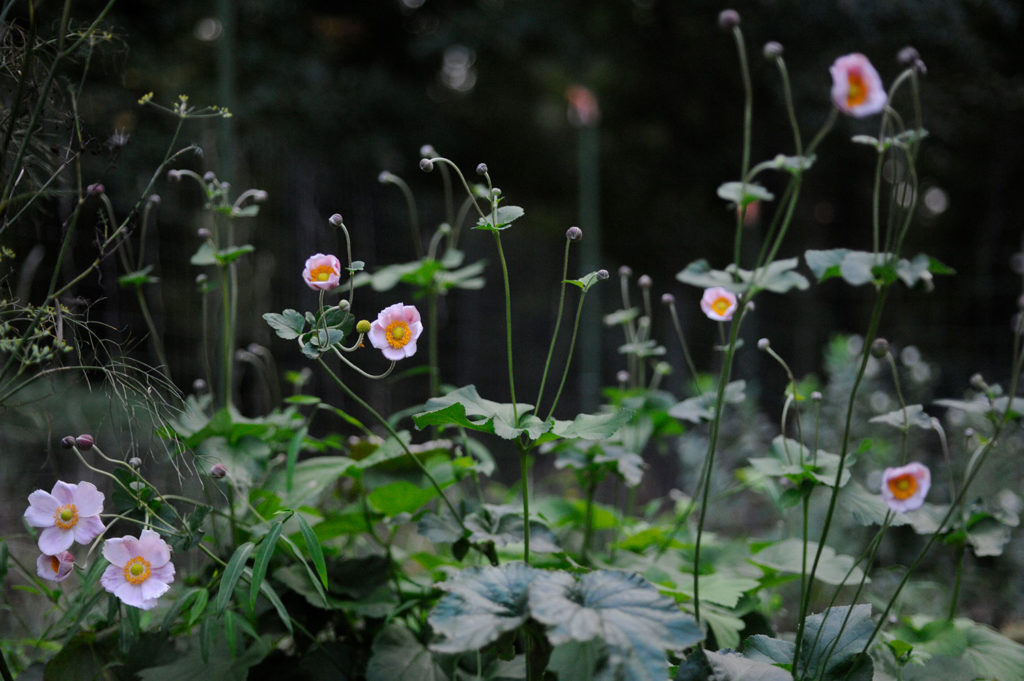
Opportunities abound in the October garden to enjoy the abundance of autumn and to sow the promise of spring. While many gardeners see fall as a time to say farewell to summer bounty and tuck the garden in for slumber, there is untapped potential this month. Especially here in zone 7 where we have a prolonged season of harvests, and for overwintering new crops. Glean seven tips below for making the most of this golden season.
Get a jumpstart on spring flowers
When we envision an idyllic spring cottage garden, full of airy blooms, a host of hardy annuals and bulbs are usually at play. Hardy annuals are cold-loving plants that perform significantly better if established during chilly weather, similar to fall-planted bulbs. It makes sense that this aesthetic emerged in England, where such specimens thrive in the cool, misty springs. Still, creating a dreamlike cottage garden is attainable for us Southern growers— we just need a headstart. Popular hardy annuals include poppies, larkspur, bachelors’ buttons, snapdragons, and sweet peas. Sow these charmers alongside winter-hardy bulbs like tulips, daffodils, anemones, and muscari. Rather than planting in early spring (as the seed packet likely says), scatter hardy annual seeds in mid to late October or November, along with your fall bulbs. They will relish the first cold snap, and you’ll be astonished by the tender but resilient blanket of foliage that grows through the kiss of frost. Come springtime, your symphony of flora will burst into bloom as days lengthen, and take early heat in stride, thanks to the strong root systems established over winter. Go ahead and get a garden party on the calendar— you’ll want to show off these epic spring flowers.
Grow abundant food for autumn feasts
The time is ripe to enjoy a fall vegetable garden. Shop your local garden center for healthy transplants— those with vigorous, green leaves and stocky rather than leggy stems, preferably started organically (check the label). Lettuce, kale, collard greens, Swiss chard, and broccoli will thrive as temperatures cool, and the leafy greens will soon be ready to harvest. Now is the time to grow dill, cilantro, radishes, mustard greens, carrots, beets, and turnips seed. Try the turnip variety ‘Hakurei;’ surprisingly sweet and succulent, it lends flavorful crunch to salads, and transforms beautifully when roasted and tossed in a miso glaze. As temperatures drop, remember that woody herbs like rosemary, sage, oregano, and thyme are very cold hardy. Pot up a few on your porch or close to your kitchen so you’ll be ready to dash out the door in your slippers for a few snips of warming wintertime nourishment used to elevate a cozy autumn stew simmering on the stove.
Harvest herbs for your home apothecary
If you’re growing tender, aromatic herbs in your garden that you’ll be sad to miss after the first frost, don’t fret— you can dry them for year-round wellness support. Many common herbs like mint, lemon balm, lemon verbena, anise hyssop, and lemongrass make delicious cups of tea, and can be incorporated into recipes for both their flavor and their medicinal properties. Simply harvest your herbs, tie them into bundles, and hang them upside down indoors, out of direct sunlight. Once your herbs are dry, destem and crumble the dried leaves so they are teapot ready, and store them in labeled jars. Follow the same process to preserve cold-hardy herbs such as sage, thyme, oregano, marjoram and rosemary— you’ll be glad you have these aromatics on hand once your kitchen starts humming for the holidays. Now is the ideal time to prune woody herbs, so this practice of preservation is supportive both to you and to your garden. A warm homemade cup of tea or the aromatics of a rosemary-rubbed roast is the perfect accompaniment to perusing seed catalogs once the January doldrums hit if you ask me.
Spruce up your landscape with perennials
Autumn is the ideal time to plant perennials, including native pollinator plants, fruiting shrubs, and shade-providing trees. Planting now allows root systems to settle in slowly, before summer’s heat puts them to the test. Shop locally for your Piedmont prairie garden, ornamental hedgerow, or backyard orchard— perennials promise beauty and abundance for years to come, and help support healthy soil life, since root systems remain in place and grow strong, year after year. After planting, make sure to water deeply and mulch well to nurture the young roots and set them up for resilience.
Nourish your soil with cover crops
While cover cropping is mostly known as a strategy that farms use to renew soil fertility, prevent erosion, and suppress weeds, home gardeners can take advantage of this trick also. Anytime soil is left bare, the microorganisms that support healthy soil (and happy plants) are exposed and vulnerable, decreasing soil quality over time. Planting a cover crop in the fall keeps soil life thriving through winter, thanks to an insulating layer of vegetation above soil level, and active roots below. In small spaces, plant a cover crop that will either die back in a hard freeze, or easily be mowed down, right as it blooms in spring. Suitable options include oats, winter peas, daikon radish, fava bean (a delicacy come spring), and crimson clover. Research the unique benefits of each, and match one or several to the needs of your garden; some fix nitrogen, while others break up clay soil or suppress winter weeds. Once cover crops are winter-killed, mowed, or crimped down after blooming, young transplants— like tomatoes, zucchini, or zinnias— can be tucked directly into this (almost) free mulch. Beyond its practicalities, cover cropping is a mindful practice of valuing life where we don’t often notice it, and being more thoughtful stewards of the land.
Plan next year’s pumpkin patch
Are you drinking a pumpkin spice latte while you read this? Did you spend your weekend hoarding decorative gourds at the farmers market? If so, this tip is for you. While picking, carving, baking, and shopping, make note of favorite pumpkins, winter squashes, and gourds for next year’s garden. These vining crops are startlingly easy to grow if you have a bit of space; they do particularly well rambling along a fence. Shop for seeds of smaller pumpkin and winter squash varieties that can act as decoration while they’re curing on the porch, and store beautifully for soups and pies long after Halloween. Noteworthy varieties in both flavor and beauty include Jarrahdale, Koginut, Black Futsu, Delicata, and Musquee de Provence.
Vampire-proof your garden with garlic this Halloween
Halloween is the traditional time to plant garlic, both because conditions tend to be right, and also— the folktales say— garlic is a potent vampire repellent. Tuck garlic cloves into well-draining soil, 2-3” deep and 6” apart. The shoots will emerge by Thanksgiving, with bulbs ready to harvest in May or June. If you plant a hardneck type (versus a softneck), don’t forget to harvest the scapes in spring— garlic scapes are incredibly tasty, and picking them will help each plant devote energy into a nice, plump head of garlic, instead of into the flower. Once garlic leaves start to brown, your bulbs are ready to harvest and dry for year-round use. Make garlic planting a Halloween tradition, and get ready for some scary good cooking next summer.

